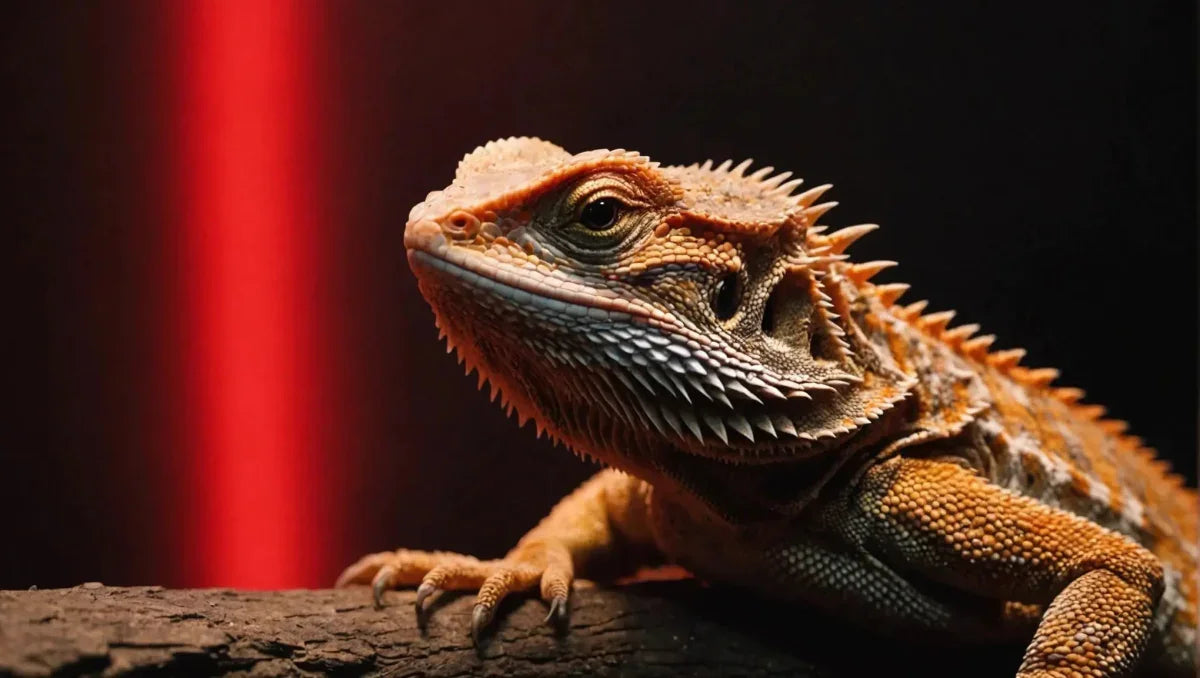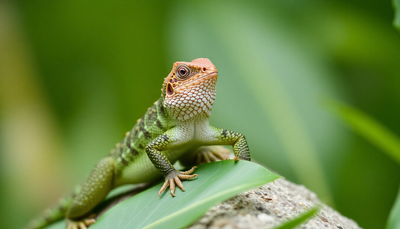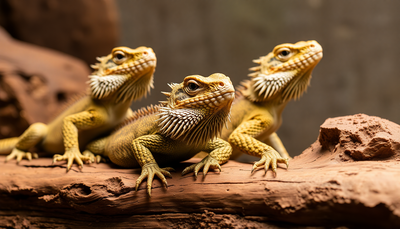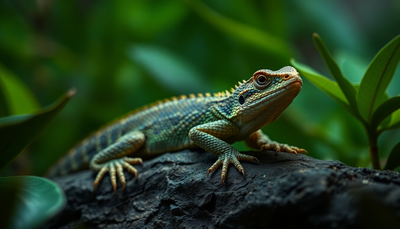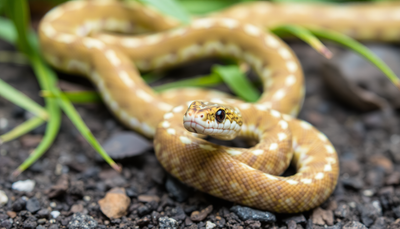Welcome to the Ultimate Guide on Caring for Your Bearded Dragon!

In this segment, we delve into the controversial topic of using red light at night. Bearded dragons require specific care to thrive, and lighting plays a crucial role in their well-being. The use of red light during the night for these reptiles has been a subject of debate among pet owners and herpetologists. Understanding the impact of different light sources on the day-night cycle of your bearded dragon is essential for creating a suitable habitat. Join us as we explore the reasons behind using red light at night, the potential benefits, and any associated risks. Whether you are a seasoned reptile enthusiast or a new bearded dragon owner, this discussion will provide valuable insights into optimizing your pet's environment for their health and happiness.
Understanding Bearded Dragons' Light Needs
Exploring the Natural Habitat of Bearded Dragons
Bearded dragons are fascinating creatures native to the arid deserts of Australia. In their natural habitat, these reptiles spend a significant amount of time basking in the sun, which serves multiple purposes essential for their well-being. The intense desert sun not only helps them regulate their body temperature but also provides crucial UVB rays necessary for various physiological functions.
The Role of Light in Bearded Dragons' Well-being
Light, particularly UVB light, is of paramount importance in the life of a bearded dragon. UVB rays aid in the synthesis of Vitamin D3, a vital component for calcium absorption. Calcium, in turn, is crucial for maintaining strong bones and preventing metabolic bone diseases. For this reason, recreating a lighting environment that mimics the sun's natural UVB output is essential in captivity.
Significance of Using Red Light at Night
While bearded dragons thrive in light during the day, they require periods of darkness to rest adequately. Implementing red light as a heat source during the night is preferred over white light due to its minimal disruption of their sleep patterns. Red light provides a gentle source of warmth without interfering with their natural circadian rhythm, allowing your pet to achieve a restful and undisturbed sleep.
Importance of Light Cycles
Apart from providing the right type of light, establishing proper light cycles is crucial for the overall health of bearded dragons. Mimicking the day-night cycles they would experience in the wild helps maintain their biological rhythms and supports natural behaviors. Consistent exposure to suitable lighting conditions aids in digestion, activity levels, and overall well-being.
Additional Considerations for Lighting
In addition to UVB and red night lights, it's essential to consider other aspects of lighting for bearded dragons. Ensure that the light fixtures are securely mounted to prevent accidental falls that could harm your pet. Regularly check and replace UVB bulbs as they degrade over time, ensuring your dragon receives adequate UV exposure. Avoid placing the enclosure in direct sunlight as it can lead to overheating and stress for your pet.
Conclusion
Understanding and meeting the light needs of bearded dragons are fundamental aspects of responsible reptile care. By replicating their natural lighting conditions, providing UVB exposure, and ensuring adequate rest periods with the use of red light at night, you can contribute significantly to the health and happiness of your scaly companion.
Benefits of Red Light at Night for Bearded Dragons
Promotes Natural Sleep Patterns
Bearded dragons, like many other reptiles, rely on natural light cycles to regulate their sleep patterns. Red light at night helps mimic the darkness of their natural environment, signaling to them that it's time to rest. This promotes healthier sleep habits and ensures they get the rest they need to thrive.
Supports Optimal Digestion
Proper digestion is crucial for bearded dragons' overall health. Red light aids in maintaining their digestive processes during the night. By providing a warm and gentle source of light, it supports the metabolic functions necessary for effective digestion, ensuring that your pet can properly absorb nutrients from their food.
Mimics Moonlight Environment
In the wild, bearded dragons are accustomed to the dim glow of moonlight during the night. Red light replicates this natural nighttime environment, creating a calming atmosphere that allows your pet to feel secure and comfortable in their habitat.
Does Not Disrupt Circadian Rhythms
Unlike white or blue light, which can interfere with bearded dragons' circadian rhythms, red light has minimal impact on their internal body clock. This ensures that their natural cycles remain undisturbed, preventing stress and health issues associated with disruptions in their daily rhythms.
How Red Light Aids in Supporting Bearded Dragons' Natural Circadian Rhythms
Impact on Sleep-Wake Cycles
Red light plays a vital role in regulating bearded dragons' sleep-wake cycles. By providing a consistent source of dim light during the night, it helps them distinguish between day and night, promoting a healthy balance between activity and rest.
Regulation of Hormonal Activity
The use of red light at night influences the secretion of hormones in bearded dragons, helping to maintain proper physiological functions. This regulation is essential for their overall well-being, ensuring that their bodies operate efficiently and effectively.
Psychological Well-being
Creating a nighttime environment that closely resembles their natural habitat has a positive impact on bearded dragons' psychological well-being. Red light provides a sense of security and comfort, reducing stress levels and promoting a sense of normalcy for these fascinating reptiles.
Section: Selecting the Right Red Light
Guidance on Choosing the Suitable Red Light for Nighttime Use
Understanding the Importance of Red Light for Nighttime Activities
Selecting the Right Red Light Spectrum: Enhancing Night Vision
When it comes to choosing a red light for nighttime activities, the selection of the appropriate light spectrum is of utmost importance. Opt for a red light with a wavelength between 620 to 750 nanometers as this range is known for preserving night vision effectively. The red spectrum minimizes disruption to your eyes' adaptation to low light conditions, making it an ideal choice for maintaining visibility without compromising your ability to see in the dark.
Emphasizing Optimal Intensity: Ensuring Enhanced Visibility Without Glare
In addition to the spectrum, the intensity of the red light is a crucial factor to consider. It is essential to opt for a red light with the right intensity level that offers ample visibility without causing glare. Excessive intensity can be blinding and counterproductive, while insufficient intensity may fail to provide the required illumination. Striking a balance by selecting a red light with optimal brightness tailored to your specific needs is key.
Balancing Spectrum and Intensity for Effective Nighttime Lighting
Achieving the perfect balance between the light spectrum and intensity is pivotal for effective nighttime lighting. A red light that combines the suitable spectrum with the right intensity not only enhances visibility but also ensures comfort during prolonged use. Whether you are camping, stargazing, or pursuing nighttime photography, opting for a red light that harmonizes these two aspects will significantly enhance your overall experience.
Practical Aspects to Consider When Choosing a Red Light
Apart from spectrum and intensity, practical considerations are vital when selecting a red light for nighttime use. Assess features such as battery life, durability, and waterproofing to guarantee that your red light can endure the demands of outdoor activities. A long-lasting battery is indispensable for extended usage, while durability is essential for outdoor adventures. Choose a red light that aligns with your practical requirements to maximize the benefits of your nighttime endeavors.
With these essential considerations in mind, choosing the appropriate red light for nighttime use becomes a strategic decision that can substantially elevate your nocturnal experiences.
Section: Implementing Red Light in Bearded Dragon Care Routine
Red light is a crucial aspect of bearded dragon care, especially during the night. Integrating red light correctly can significantly impact the well-being of your pet. Let's delve into the process of incorporating red light into your bearded dragon's habitat.
Step 1: Choosing the Right Red Light.
Select a red light bulb specifically designed for reptiles. These bulbs emit a wavelength that doesn't disrupt the bearded dragon's sleep cycle.
Step 2: Installing the Red Light.
Place the red light source outside the primary basking area. This placement helps create a natural day-night cycle, allowing the bearded dragon to rest comfortably.
Step 3: Monitoring Temperature.
Ensure that the red light doesn't affect the overall temperature gradient in the enclosure. Use a thermometer to monitor the temperature regularly.
Optimal Placement of Red Light.
Position the red light source in a way that it provides gentle illumination without causing glare or disturbance. The light should be diffused to prevent direct exposure to the bearded dragon.
Incorporating red light into your bearded dragon's care routine can enhance their overall health and mimic their natural habitat. By following these steps and ensuring the correct placement of the red light, you can create a comfortable environment for your beloved pet.
Benefits of Red Light in Bearded Dragon Care.
Beyond providing a night-time light source, red light offers various benefits to your bearded dragon. Red light is less disturbing to reptiles compared to white or blue light, allowing them to maintain their natural behaviors during the night. It also helps regulate their circadian rhythm, promoting a healthy sleep-wake cycle. Additionally, red light can aid in digestion and metabolism, crucial aspects of your bearded dragon's overall well-being.
Potential Issues to Watch Out For.
While red light is beneficial, improper usage can lead to some issues. Be cautious not to expose the bearded dragon to red light for extended periods during the day as it may disrupt their natural cycle. Also, ensure that the red light source is not too bright or too close to the basking spot, as this can cause discomfort or stress to your pet. Regularly check for any signs of skin irritation or behavioral changes that might indicate a negative reaction to the red light.
Conclusion.
Incorporating red light into your bearded dragon's care routine is a simple yet essential step in providing a conducive environment for their well-being. By following the proper guidelines for choosing, installing, and monitoring the red light, you can ensure that your pet benefits from its positive effects. Remember to observe your bearded dragon's behavior and make adjustments as needed to create a comfortable and healthy habitat for your beloved reptile.
Monitoring and Adjusting Red Light Usage
Importance of Observing the Bearded Dragon's Behavior and Health
Bearded dragons require specific lighting conditions to thrive in captivity. The use of red lights, particularly at night, can impact their behavior and overall health. It is crucial for reptile owners to closely monitor how their bearded dragon responds to the red light to ensure it is benefiting rather than harming them. Observing their behavior, appetite, and activity levels can provide valuable insights into whether the red light is suitable for them.
Tips for Adjusting Light Duration or Intensity
To ensure the well-being of your bearded dragon, it may be necessary to adjust the duration or intensity of the red light based on your observations. If you notice any negative changes in their behavior or health, such as increased stress, decreased appetite, or signs of discomfort, consider reducing the amount of time the red light is used or lowering its intensity. Conversely, if your bearded dragon appears to benefit from the red light, you can gradually increase the duration or intensity while continuing to monitor their response.
By staying vigilant and responsive to your bearded dragon's needs, you can create a suitable lighting environment that promotes their health and well-being.
The Impact of Red Light on Bearded Dragons' Sleep Cycles
In the wild, bearded dragons rely on natural light cycles to regulate their sleep patterns. The introduction of artificial lighting, such as red lights, can disrupt this natural rhythm. It's essential to consider how red light exposure at night may affect your pet's sleep quality. Some bearded dragons may be sensitive to light during their rest period, leading to sleep disturbances or stress. Monitoring their sleep patterns and behavior after implementing red light can help you determine if adjustments are needed to ensure they get adequate rest.
Regulating Temperature with Red Light
Aside from affecting their sleep, red lights also play a role in maintaining the appropriate temperature levels in your bearded dragon's habitat. While providing warmth is essential, excessive exposure to red light can lead to overheating. It's recommended to use a thermostat to monitor the temperature accurately and adjust the light intensity accordingly. Observing your dragon's thermoregulation behavior can signal whether the red light is helping maintain the ideal temperature gradient within their enclosure.
Balancing Red Light with Natural Sunlight
Although red lights serve specific purposes, they should not be a substitute for natural sunlight exposure. Bearded dragons require UVB rays to synthesize vitamin D3, crucial for calcium absorption and overall health. While red lights can provide supplemental heat, they do not offer the full spectrum of light that natural sunlight does. Therefore, it's important to allow your bearded dragon access to natural sunlight or use UVB bulbs in addition to red lights to meet their lighting requirements adequately.
Educating Yourself on Bearded Dragon's Light Needs
Every bearded dragon is unique, and their response to lighting can vary. It's essential to educate yourself on the specific light requirements of your pet species. Research the optimal light spectrum, intensity, and duration suitable for bearded dragons to create a lighting setup tailored to their needs. Consulting with a reptile veterinarian or experienced reptile keeper can also provide valuable insights and guidance on maintaining the right lighting balance for your bearded dragon's health and well-being.
Monitoring and adjusting red light usage for your bearded dragon involves careful observation, responsiveness to their behavior and health, and a good understanding of their lighting requirements. By fine-tuning the red light duration, intensity, and considering its impact on sleep cycles and temperature regulation, you can create a lighting environment that supports your bearded dragon's overall wellness and vitality.
Bearded Dragon Care: Using Red Light at Night
The provided topic: Bearded Dragon Care: Using Red Light at Night.
Conclusion: In conclusion, while using red light at night for bearded dragons may provide some benefits such as maintaining a warmer ambient temperature, it is essential to consider the potential negative effects such as disrupted sleep patterns. It is important for reptile owners to weigh the pros and cons carefully and consult with a vet to ensure the well-being of their beloved pets. Ultimately, providing a natural day-night cycle with appropriate lighting and temperature gradients remains crucial for the overall health and happiness of bearded dragons in captivity.


